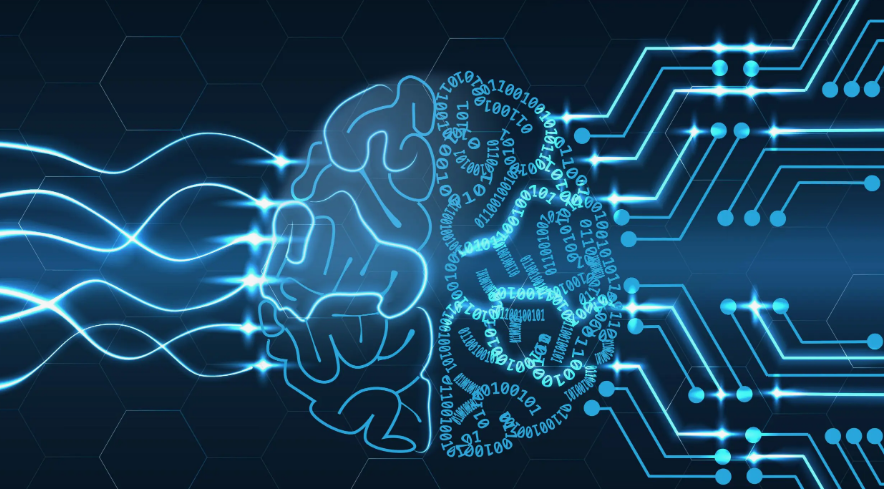AI image compression uses powerful algorithms to reduce file size without affecting image quality. It leverages artificial intelligence techniques to achieve more efficient compression of data, offering adaptability and learning capabilities to the compression process. Traditional compression algorithms, such as Huffman coding or Lempel Ziv methods, are based on fixed rules and patterns, while AI-based compression brings a more dynamic approach. This makes AI compression methods more effective in preserving image quality while rapidly lowering file size.
As the demand for efficient image compression grows, AI-based methods have become increasingly popular due to their ability to accurately find patterns that make data smaller without losing information. This advancement has led to the development of AI-powered compression solutions that excel in reducing file sizes without compromising image quality. With the continuous evolution of AI technology, the future of image compression looks promising as AI language models continue to exceed the capabilities of traditional compression algorithms.
AI Image Compression

Traditional AI Image Compression Techniques
AI image compression techniques utilize advanced algorithms to efficiently reduce file sizes while maintaining image quality. Unlike traditional methods, AI-based compression adapts and learns during the process, offering superior results. These innovative approaches revolutionize image compression for optimal performance and efficiency.
Traditional Image Compression Techniques Image compression is an essential process that helps to reduce the size of the image without compromising its quality. For years, traditional image compression techniques like JPEG, PNG, and GIF have been widely used. However, these techniques have some limitations. They often result in a loss of image quality, which can be noticeable, especially if the image is compressed too much. With the introduction of AI image compression techniques, we can now compress images without losing their quality.
Lossy Compression- AI Image Compression
Lossy compression is a traditional image compression technique that is widely used. It works by removing some of the image data to reduce the size of the image. This technique is suitable for compressing images with many colors or gradients, such as photographs. However, the downside of lossy compression is that it results in a loss of image quality, which can be noticeable, especially if the image is compressed too much.
Lossless Compression
Lossless compression is another traditional image compression technique that works by compressing the image without losing any data. This technique is suitable for compressing images with fewer colors or gradients, such as logos, icons, or illustrations. The advantage of lossless compression is that it does not result in a loss of image quality, making it suitable for images that require high-quality compression. In conclusion, traditional image compression techniques like lossy and lossless compression have been widely used for years. However, with the introduction of AI image compression techniques, we can now compress images without losing their quality. Lossy compression is suitable for compressing images with many colors or gradients, while lossless compression is suitable for compressing images with fewer colors or gradients.
AI-based Image Compression
AI-based image compression utilizes advanced algorithms to reduce file sizes while maintaining image quality.
Neural Network Approaches
Neural network approaches in AI image compression involve the use of deep learning models to analyze and compress images effectively.
Generative Adversarial Networks (gans) For Compression
Generative Adversarial Networks (GANs) are utilized for compression to generate high-quality images with reduced file sizes through competitive training.
Benefits of AI in Image Compression
AI technology has revolutionized image compression, offering a range of benefits that significantly enhance the efficiency and effectiveness of this process. From improved compression ratios to the preservation of image quality, AI brings a new level of adaptability and learning capabilities to the compression process.
Improved Compression Ratios
AI-based image compression algorithms are designed to achieve more efficient compression of data compared to traditional methods. By leveraging artificial intelligence techniques, these algorithms can identify and remove unnecessary material from images, resulting in significantly improved compression ratios. This means that AI-powered compression solutions can reduce file sizes more effectively while maintaining image quality.
Preservation of Image Quality
One of the key benefits of AI in image compression is its ability to preserve the quality of images during the compression process. Unlike traditional compression algorithms, AI-based solutions have the adaptability and learning capabilities to ensure that image quality is maintained while rapidly lowering file sizes. This means that users can reduce the size of their images without compromising on visual clarity and detail.
AI Image Compression online Free
AI image compression offers a revolutionary approach to reducing image file sizes while preserving quality. With the advancement of AI technology, online tools now provide free and efficient image compression solutions. These tools utilize powerful algorithms and machine learning to optimize image data, making them perfect for individuals and businesses looking to enhance website performance and user experience.
Computational Complexity
AI image compression involves complex computational processes to analyze and reduce image data. By leveraging sophisticated algorithms, these systems can efficiently identify and eliminate redundant information within images, leading to significant file size reduction without sacrificing quality.
Training Data Limitations
One of the challenges in AI image compression lies in the availability and quality of training data. The effectiveness of AI models in compressing images relies heavily on the diversity and quantity of the training datasets. Limited or inadequate training data may hinder the performance and accuracy of AI image compression algorithms.
Applications of AI Image Compression
Medical Imaging
AI image compression has revolutionized medical imaging by significantly reducing the file sizes of high-resolution images without compromising their quality. This technology allows for faster transmission and storage of medical images, enabling healthcare professionals to efficiently analyze and diagnose patients’ conditions. Furthermore, AI image compression ensures that crucial details in medical images are preserved, contributing to accurate diagnoses and improved patient care.
Remote Sensing
In the field of remote sensing, AI image compression plays a vital role in optimizing the storage and transmission of large volumes of satellite and aerial imagery. By employing advanced algorithms, AI image compression facilitates the efficient transfer of remote sensing data while maintaining the essential information required for environmental monitoring, disaster management, urban planning, and agricultural assessments. This enables researchers and organizations to access and analyze remote sensing data more effectively, leading to enhanced decision-making and resource management.
Future Trends In AI Image Compression
The future of AI image compression holds promising advancements that can revolutionize the way images are processed and optimized. With the continuous development of AI technology, image compression is expected to undergo significant enhancements in algorithms, integration with IoT and Edge Computing, and more. Let’s explore the potential future trends in AI image compression.
Enhanced Algorithms
AI image compression is poised to witness a significant evolution in its algorithms. With advancements in machine learning and deep learning, enhanced algorithms will enable image compressors to achieve higher levels of compression while preserving image quality. These advanced algorithms will empower image compressors to efficiently reduce file sizes without compromising on visual fidelity. The integration of AI-driven optimization techniques will enable the compression of high-resolution images to remarkably smaller sizes, such as compressing an image to 100kb or even further down to 20kb, without sacrificing clarity and detail.

Integration With Iot and Edge Computing
The future of AI image compression will see a seamless integration with IoT and Edge Computing. As IoT devices continue to proliferate across various industries, the demand for efficient image compression solutions that can cater to the constraints of IoT and Edge Computing environments will rise. AI-driven image compressors will be tailored to operate effectively within the limited computational resources and bandwidth constraints of IoT and Edge devices. This integration will enable real-time image compression and transmission, allowing for swift and optimized data transfer without compromising the quality of compressed images.
Frequently Asked Questions
What is the AI tool for compressing images?
Nero AI Image Compressor is an AI tool for compressing images. It uses powerful algorithms to identify and remove unnecessary material to reduce file size without affecting image quality. It’s a free tool that preserves the quality of the image while rapidly lowering its file size.
Is AI lossy or lossless?
AI compression is lossy, preserving image quality while reducing file size through powerful algorithms.
What is compression in AI?
AI-based data compression in AI leverages advanced algorithms to efficiently compress data, improving traditional methods by adding adaptability and learning capabilities.
Conclusion
Efficient AI image compression algorithms like Nero and VanceAI preserve quality while reducing file size. AI-based methods outperform traditional compression techniques by adapting and learning patterns for optimal results. Embracing AI in image compression ensures high-quality visuals with reduced storage and bandwidth costs. Experience superior image compression with AI technology today.

